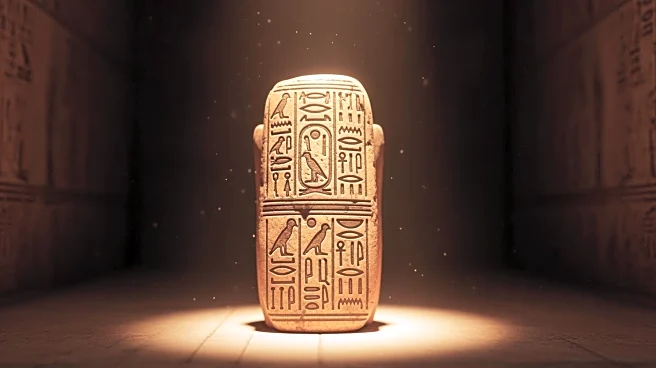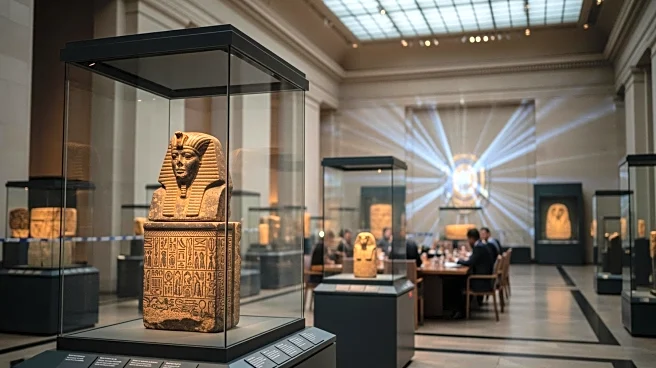What's Happening?
Researchers have discovered two hidden voids within the Pyramid of Menkaure in Giza, Egypt, using non-destructive imaging techniques. These voids, located behind the pyramid's eastern facade, may indicate
the presence of a lost entrance to the tomb. The discovery is part of the ScanPyramids project, which aims to uncover hidden features within Egypt's pyramids. The voids were detected using georadar, ultrasound, and electrical resistance tomography, revealing air-filled cavities that could provide new insights into the pyramid's construction.
Why It's Important?
The discovery of hidden voids in the Pyramid of Menkaure could shed light on ancient Egyptian construction techniques and the purpose of these structures. Understanding the layout and features of the pyramids can provide valuable information about the civilization that built them. This research may also lead to new archaeological findings and enhance our knowledge of Egypt's historical and cultural heritage.
What's Next?
Further exploration and analysis of the detected voids may reveal more about their significance and potential connections to other parts of the pyramid. Researchers will continue to use advanced imaging techniques to study the pyramids and uncover hidden features. This ongoing research could lead to new discoveries and a deeper understanding of ancient Egyptian architecture.












